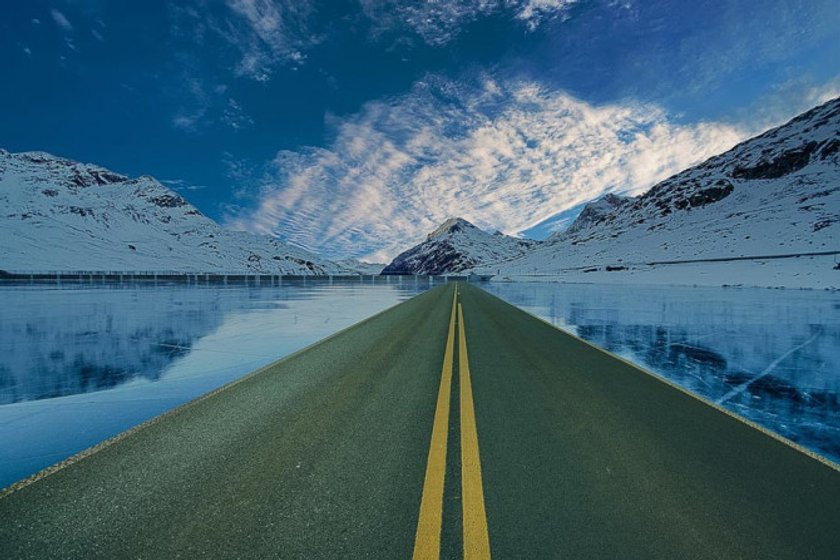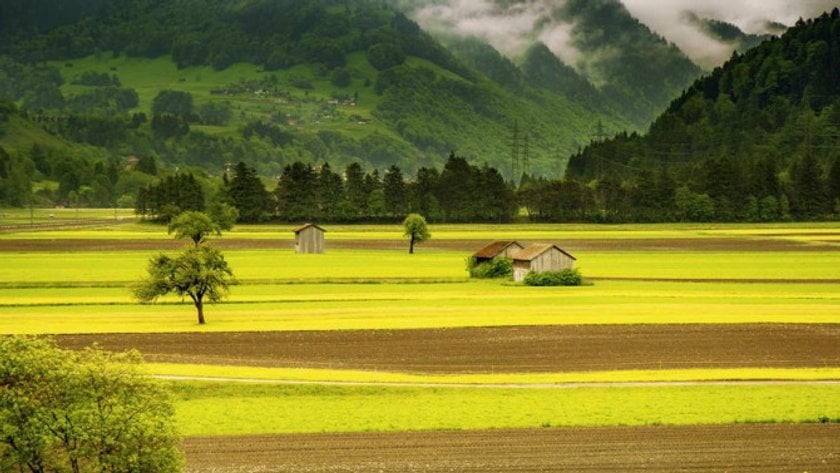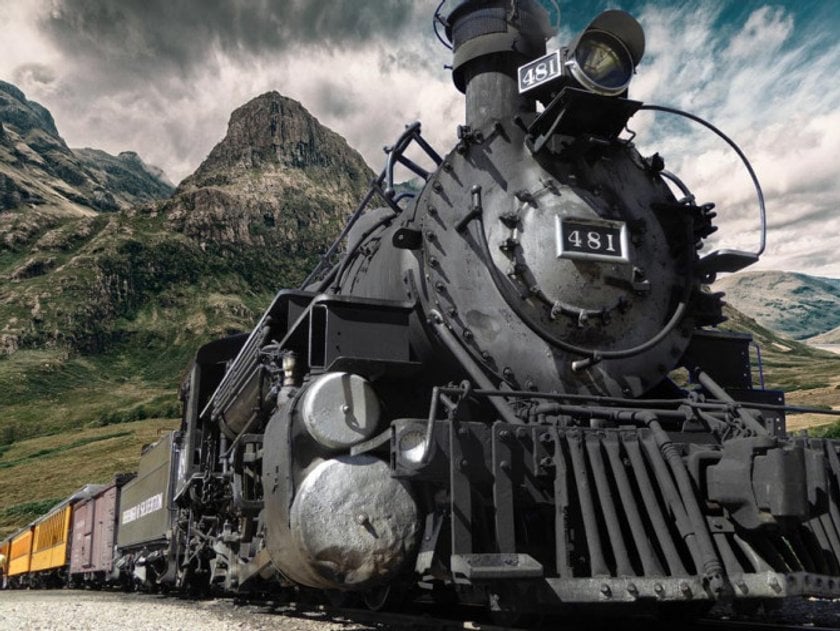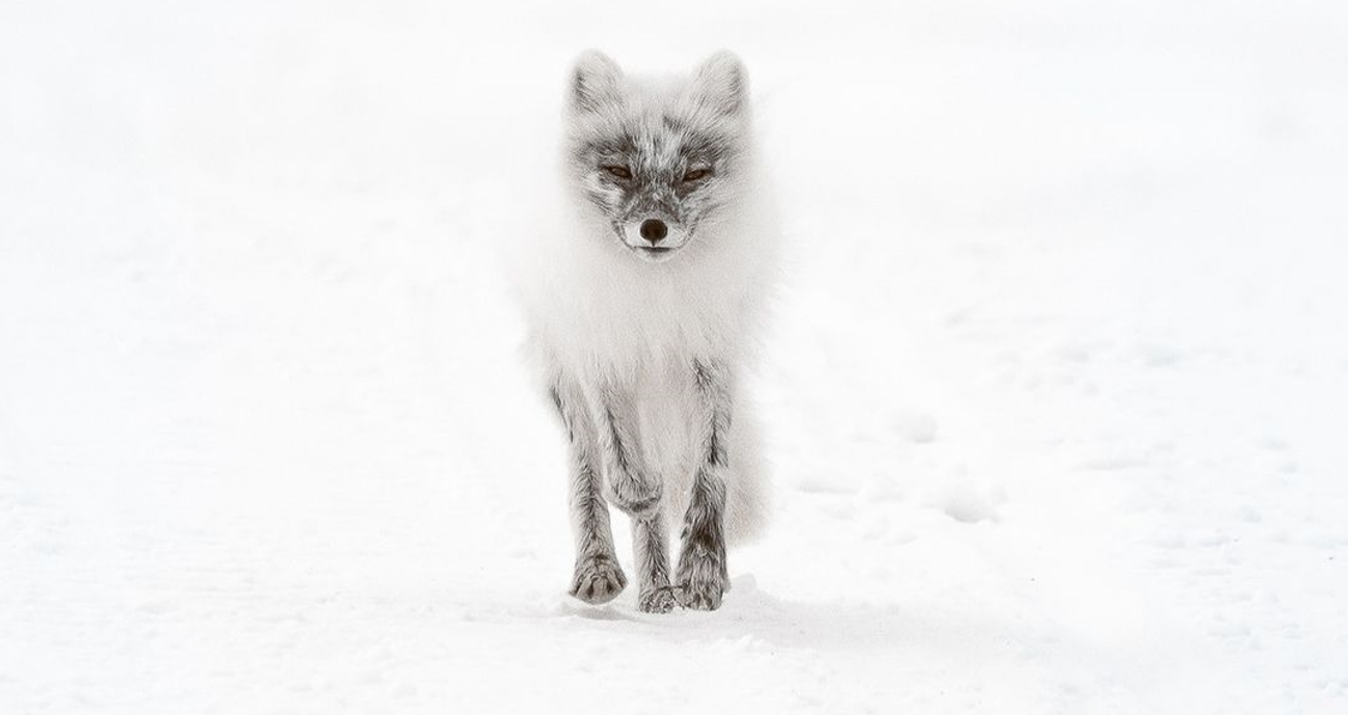How to Use Perspective in Photography Effectively
September 21, 2017

Perspective is a very effective element in photography. Learning the types of perspectives in photography and how to apply them will help you create more interesting images. Here’s how to use perspective for creating masterpieces.
So, what is perspective in photography? You’ll hear the term perspective used often in photographic circles. That’s because it’s a powerful tool. Understanding it and knowing how to manipulate it can help transform flat, boring snapshots into images with depth and character closer to the viewer. You can even use it to fool your viewers. First of all, we should understand the definition of perspective in photography.
What the Term Means
Perspective has several definitions. The one that applies to photography deals with the depiction of spatial relationships and volume on a flat surface. In other words, perspective photography definition is how we give the impression of a three-dimensional scene on a two-dimensional screen or piece of paper.
Types of Perspective
Photographers, illustrators and painters all employ perspective in similar ways for three-dimensional works. There are certain elements in the 3-D world that our minds use to recognize depth. We arrange those elements within our compositions to convey the sense of a third dimension. Here are the most common types of perspective in photography:

Linear convergence: Parallel lines in a scene appear to converge as they recede toward a vanishing point in the distance. The lines can be actually seen or just implied to converge. Edges of structures, the width of roads or natural formations and even the foreshortening of body parts are good examples of this visual phenomenon that makes objects look different.

Relative size: This effect is closely related to the one above. When elements of similar size appear smaller or larger than one another, our brains translate the difference into distance or depth. This also applies to changes in the difference between object sizes. This second application is often used to create false perspective, also known as forced perspective.

Atmospheric effects: Our minds are accustomed to having difficulty in seeing distant objects clearly. That’s because the light reflected from them is scattered by dust, water and other airborne particles before it reaches our eyes. The severity of this effect varies with atmospheric conditions, such as haze, fog or smog, and focal point.

Overlap perspective photography examples: Overlap means that objects from viewpoints closer to us will block out portions of more distant ones. When elements in a scene overlap, it gives viewers an impression of their relative distances from the viewpoint and implies depth.
There are also other types of perspective, let's dwell on each of them in more detail.
Linear perspective
Examples of linear perspective photography can be found in a huge number of works. It is characterized by parallel leading lines, which on the horizon converge to a single point. Various objects can be used to express this composition: road, fence, rails, and row of houses facing each other. The lines do not necessarily have to be parallel. The spiral staircase which takes the eye into the depth of the spiral may also serve as an example of linear perspective in photography. This technique enriches the frame with dynamics and rhythm. The depth of perspective comes from the diagonals, the look seems to fly to the horizon as if clinging to them.
The easiest way to capture the linear perspective is with the wide-angle lens. It gives you more space in the frame, letting you see lines all the way to the vanishing point on the horizon. A telephoto lens, on the other hand, compresses perspective, that is, the space between the foreground and the background. This leads to a loss of three-dimensionality, and in this case, the lines cannot always come together.
A photography linear perspective is influenced by the shooting point and camera angle. Using guidelines that lead the viewer's eye to the compositional center and by photographing from below you can create the illusion of three-dimensionality in the frame.
Linear perspective photos are divided into the following types:
Central. Lines occupy a central position in the frame, and the vanishing point is clearly visible. This position gives maximum volume even to the two-dimensional space.
Lateral. In such a perspective image, lines from the center shift sideways.
Extreme. The diagonals and the point of their convergence are close to the frame border.
Open. The merge itself is not seen in the frame. But it is supposed to be somewhere outside the frame.
Aerial perspective
Unlike the previous subspecies, here the photographer is not working with geometry, but with contrast and clarity of objects. The farther away they are from the camera, the more faded it seems. The outlines of objects get blurry and their colors lose their richness. The picture looks as if it is composed of several pictures of different intensities superimposed on each other. Thus you can achieve the illusion of volume and a sense of depth in the frame.
The optical density which increases with distance contributes to this. After all, the atmosphere of the Earth is not uniform: it consists of a mixture of vapors, and small solid particles. They absorb the sunlight and scatter it. The aerial perspective images are most effective in foggy weather.
The perspective will be better emphasized in the photo in this case if you use a telephoto lens. The foreground, which is in the sharpness zone, will be partially cut off. And the attention will be focused on the misty distance. An aerial perspective is often seen in the composition of landscape photos.
Tonal perspective
The main difference with aerial perspective is that the changes are in the colors and tones of the distant object. Figures and objects in the foreground appear darker than those in the distance. In other words, if the darker objects are brought forward and the lighter ones are removed backward, the picture will have a tonal perspective.
The illusion of volume and a sense of scale can also be achieved with color. Cold shades make objects appear farther away, and warm shades make them appear closer. This phenomenon is called chromatic stereoscopy and is successfully used in painting.
If a light-skinned model is photographed against a black background, it is as if it pushes her forward. In this case, we can say that inverse tonal perspective photography is used. Let's talk about it in more detail.
Reverse Tone Perspective
In non-still photography, there are often moments when the photographer can not place the dark on the light. But the semantic accents can be put in another way for a perspective picture. When light objects are pushed forward and dark objects are left behind, you can get very interesting shots.
Reducing Perspective
The specifics are that the subject diminishes with distance. Imagine a power line. The pole closest to the camera will appear larger in the row. Each subsequent one will shrink. A perspective photo of this kind is better done with objects of similar size and varying distances from the photographer. This way you can create depth of the frame. Knowing the true size of objects, you can estimate remoteness by changing visual size.
Artificial perspective
The idea is to make objects that are at different distances from the camera the same size. The technique is one of the best ways for creating fun shots with tall buildings. Other funny tricks are also possible: not the equalization of objects in the frame, but, for example, the reduction or diminishing scale of some of them. A person can hold such an object in his hands, which is actually much larger than his own size.
How to Apply Perspective in Photos
With a basic understanding of the perspective photos principles, you can try shooting and applying them when you compose your shots. Start by recognizing the elements we’ve mentioned above, then look for the most effective ways to use them.
Your point of view (PoV) will often have more impact on perspective than any other factor in your composition for perspective shots. Raising or lowering the camera, moving left, right, closer of farther away will all alter your viewers’ perception. This can be used to increase the sense of depth or to create an “alternate reality”.

It’s all about purpose. How you use perspective in your photos depends on what you want your viewers to see, or more accurately, feel. These photography tips can be used in a landscape, travel or architecture shot, a greater sense of perspective adds a pleasant sense of depth. Enhancing atmospheric effects can create a dreamy, mysterious or threatening mood for your beautiful images. This can often be done after the shot with tools like the Luminar Neo Atmosphere AI.
Less traditional purposes include creating false impressions like “big fish” photos or vertigo-inducing sensations of height. There are countless ways to use perspective and creative photographers are always aware of it in their compositions. This is a great way to create an illusion of three-dimensional space which is defined as the sense of depth.

Lens Compression and Expansion
While we’re discussing perspective, it’s appropriate to mention the fallacy of its compression or expansion by various focal lengths which photographers use. Since this has been debunked in detail by countless reputable sources, we’ll offer the condensed version here.
Changing lens focal lengths changes the magnification of everything in the frame. A 70mm lens will make everything appear larger in the frame than a 35mm lens when used at the same viewpoint. This can give the impression of altering the relative size of objects (compressing distance). In reality, cropping a 35mm photo to match a 70mm shot from the same point will show that the change has no effect on pictures with perspective.

This isn’t to say that swapping lenses can’t make a difference in perspective. When you combine it with a change in camera to subject distance, it’s very effective for interesting perspective photography. For instance, using a wide-angle lens close to your subject can greatly enhance convergence and relative size differences, as in the photo above. This is actually a result of distortion.
Use Your Imagination
The keys to effective use of perspective in photography are within your own mind. The tools for the best perspective photography are always in front of you. Learn to recognize the elements that create that third dimension and then find new and unique ways to make them work for your perspective in photography.
As always, practice makes perfect images with perspective. Make a habit of changing your point of view often and you’ll always find surprises for you and your audience.
Conclusion
You have already understood what perspective photography is. The perspective photographs are a combination of many different factors. Photo editing software will help give your photos an extra dimension. Professional retouching will add depth and sharpness, and make the colors clear and saturated. All these manipulations for perspective pictures can be done in the program Luminar Neo. The software has a convenient and clear menu and contains various tools for professional color correction, composition, and retouching.






